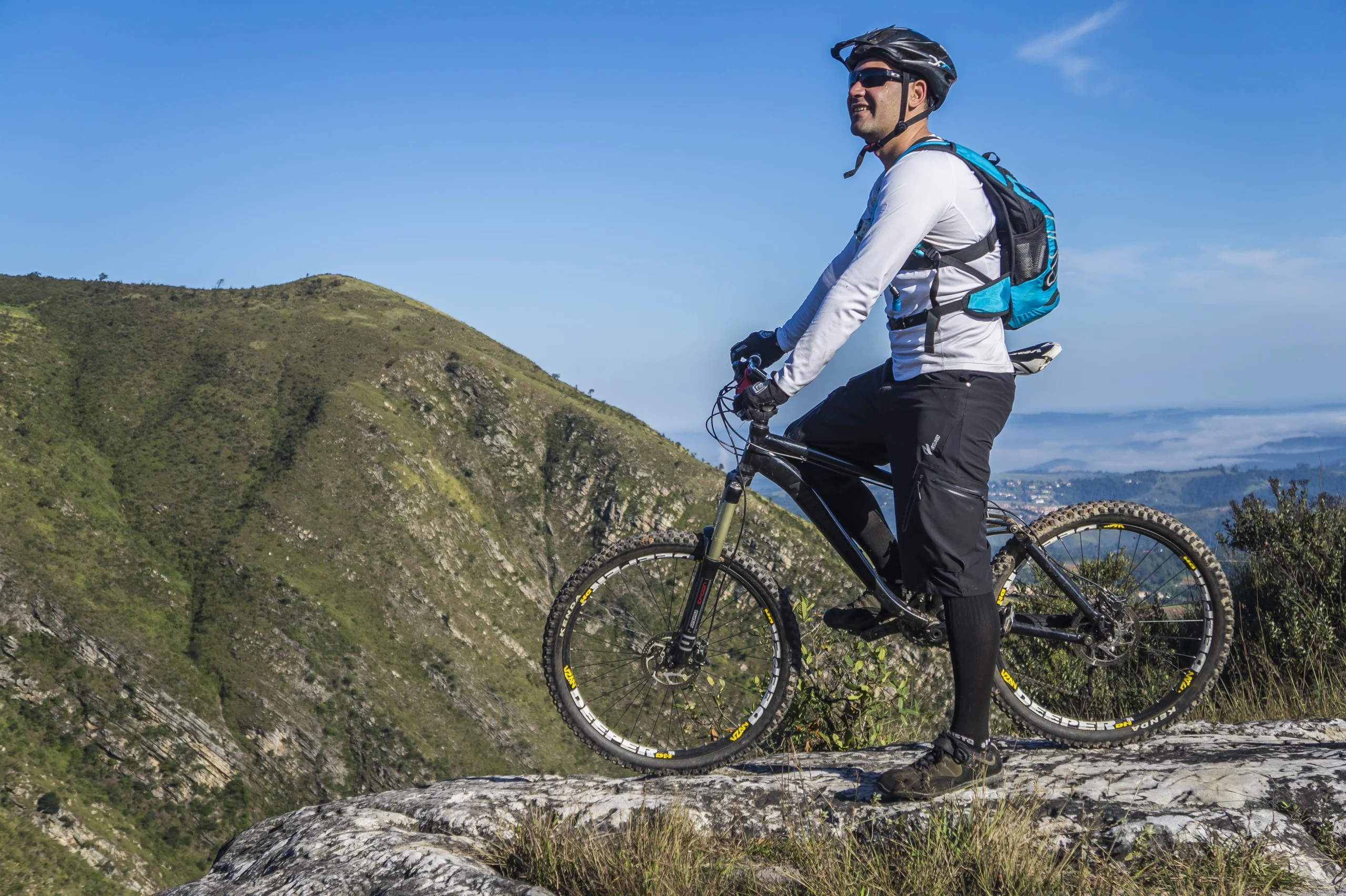
What to wear mountain biking is an important question. Mountain biking is thrilling but requires proper gear and attire to ensure a fun and safe experience. Wearing the right clothes can help you stay cool, protect you from injuries, and ensure your comfort during your ride.
Let’s explore what to wear for mountain biking. We’ll provide some tips and tricks to help you find the perfect balance between style and function.
Table of Contents
Dress for Shredding the Trails: Perfect the Mountain Biking Attire
When it comes to mountain biking clothing, prioritize comfort and functionality. Choose breathable, lightweight, and moisture-wicking clothing to keep you cool and dry. The following suggestions are for riders going off-the-beaten path into rough terrain, where roots and rocks, and other gnarly elements warrant safety-heavy recommendations.
You need apparel to protect all parts of your body. You’ll need the right helmet, sunglasses, a proper-fitting biking jersey (or lightweight shirts/t-shirts), padded shorts, and socks and shoes. Accessories are optional, and we try to cover a few of them as well.
Mountain Biking Helmets

Cycling helmets are an essential cycling attire every cyclist needs to protect himself/ herself from head injuries. This holds particularly true for mountain biking, where the risk of falling on rocks or other hard surfaces is high. A helmet can be the difference between a minor injury and a life-threatening one.
Two Types of Mountain Biking Helmet
Helmets come in two styles: open face (half-shell) and full-face.
Open-face helmets are commonly seen on road cyclists. They are lightweight and easy to put on and take off and also are comfortable on long rides. However, open-face helmets offer less protection than full-face helmets since they only cover the top and sides of the head. They are more suitable for riders who value comfort and speed over safety.

On the other hand, full-face helmets provide complete coverage to the head, including the mouth and jaw. Full-face helmets provide a high degree of protection. BMX riders and downhill racers use the full-face style helmet, to minimize the risk of injury on dangerous terrain.
Full-face helmets sacrifice some comfort for safety. Their bulk makes the helmet style unsuitable for long rides in hot and humid weather.
Remember: not all helmets are created equal. Ensure your bike helmet conforms to the safety standards set by regulatory bodies such as CPSC, EN, and ASTM. These standards ensure the helmet can withstand an impact and protect the head from injury.
A newer technology in helmet safety is called MIPS (Multi-directional Impact Protection System). A MIPS reduces the potential damage from concussion and trauma. This is another layer of safety available in all types of helmets. You can find more information on MIPS here.
Fit and safety standards are a priority when bike helmet shopping. Look for a helmet with plenty of ventilation to keep your head cool and ensure it won’t obstruct your vision.
Some name-brand cycling helmets include
-
- Giro
-
- Specialized
-
- Bontrager
- Bell.
Eyewear for Mountain Bikers
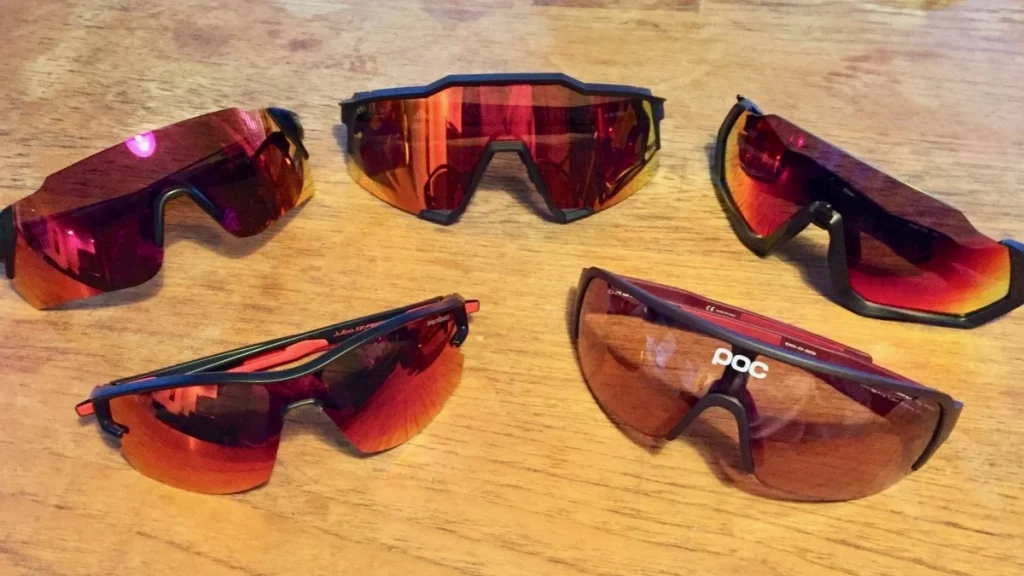
Mountain biking is an exciting sport that demands speed, agility, and intense concentration. The off-road trails can be extremely challenging, with debris and insects flying around constantly. Protect your eyes against debris and small bugs that may cause significant damage. To ensure a comfortable and safe ride, proper eyewear is essential.
A good pair of sunglasses will protect your eyes from debris and help you focus on the trail ahead. They can also reduce sun glare which can throw off your line of sight.
Polarized sunglasses, in particular, provide clear vision by reducing sun glare allowing you to concentrate on the trail ahead. Invest in a quality pair of shatter-proof and polarized sunglasses to shield your eyes and get a stylish, trail-ready look. Popular mountain biking eyewear brands include:
-
- Oakley
-
- Smith Optics
-
- Tifos
I personally have a couple of cheap but well-reviewed pairs from Amazon that have held up pretty well.
You can select from a wide variety of designs and colors. But remember that comfort and functionality should be your top priorities when choosing a pair of mountain biking sunglasses.
Mountain Biking Sunglasses Should:
-
- Fit snugly on your face
-
- Prevent dust and debris from entering your eyes
-
- Be made of high-quality, lightweight, shatter-proof, and scratch-resistant materials
Fit Makes All the Difference for Mountain Biking Clothing
There is no end of mountain biking clothing options for you to spend time and money exploring the top sportswear brands.
You can have mountain bike jerseys and shirts made of all kinds of materials. The key is to find something that fits you on and off the trails. The clothing should be able to move with you while on the bike. It should not restrict your movement while trail riding.
You can divide the clothing into hot and cold weather products.
During the summer, you need something that helps wick away moisture and keeps you ventilated, so that you stay cool and dry. Avoid cotton shirts or jerseys as they may absorb sweat and weigh you down. In the winter, dress in layers. Use a moisture-wicking base layer to keep skin dry, and select a breathable outer layer to evaporate sweat and body heat.
You can read more about cold weather riding here. A lightweight windbreaker or waterproof jacket will protect you and keep you dry on those wet rides on the trail. You might also consider a long sleeve jersey for full coverage. A few good brands that provide value for money are:
-
- Pearl Izumi
-
- Decathlon
-
- Rapha
-
- Castelli
Cycling Shorts: Hot and Cold Weather Options
Cycling shorts can also be split into hot and cold weather products.
For padded shorts, make sure they move with you and don’t rub on the skin. Most padded shorts come with their own synthetic outer material, which is ideal in the summer. During the winter, dress in layers. Use the padded layer as a base, with a thermal or other similar long tights over top as the outer layer.
Choose fitted clothes that won’t drag or become caught in your bike’s chain or wheels. A pair of padded shorts and a jersey with a zippered front will help you stay comfortable during long rides.
Biking Gloves
Cycling gloves are a crucial often-overlooked aspect of mountain bike gear. Not only do they provide a better grip on the handlebar, but they also protect the hands from potential injuries.
When cycling in humid environments, our hands sweat and slip, making it difficult to maintain a firm handlebar grip. Gloves help prevent sweaty palms and provide a firmer grip, allowing better control over the bike.
Mountain bike gloves are designed with extra padding to provide cushioning from the rough terrain. This padding can help reduce the impact of vibrations that can cause hand fatigue, making long rides more comfortable. The padding also helps to absorb any shocks that may occur when riding on rocky or uneven terrain. This feature is particularly important for mountain bikers who ride on technical trails with lots of drops, jumps, and obstacles.
In addition to providing better grip and cushioning, full-finger gloves also protect the hands in the event of a fall. When a cyclist falls off the bike, we tend to reach out to break the fall with our hands. This instinct results in cuts, bruises, and other hand injuries to the hands.
Cycling gloves protect the hands from such injuries. The gloves act as a barrier and absorb some of the impact while preventing cuts and bruises. Sizing is also crucial when choosing biking gloves.
Gloves that are too tight can restrict blood flow and cause you discomfort. While loose gloves can slip off the hands, reducing their effectiveness. Try on a few different sizes to find gloves that fit snugly to the fingers while offering some flexibility and comfort.
Pads and Guards Protect On the Trail
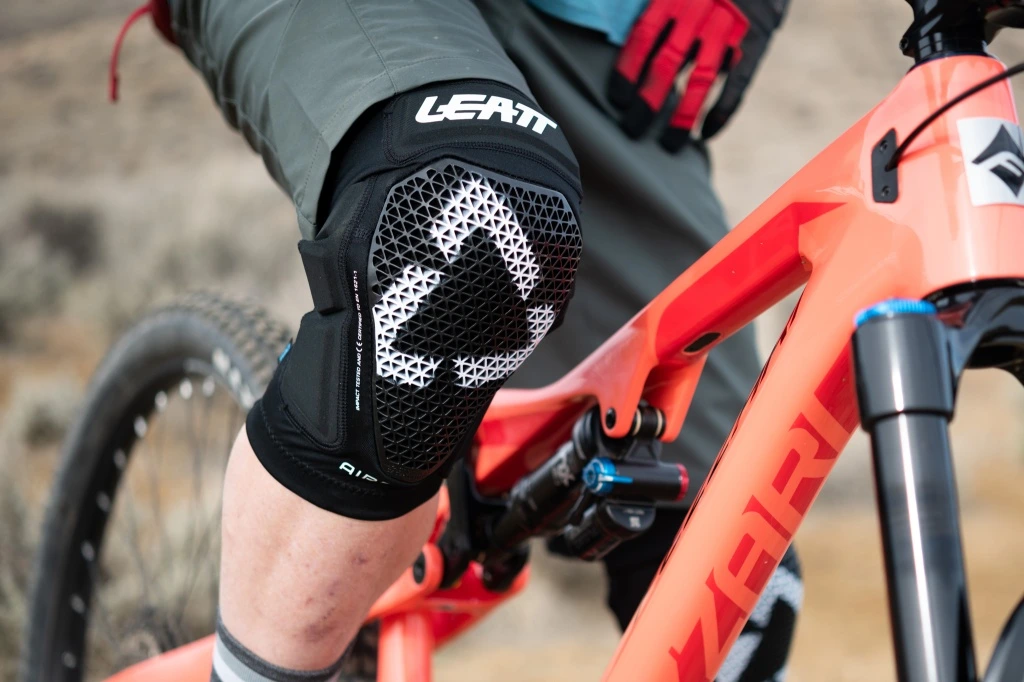
In extreme sports such as biking accidents happen. It is always better to be safe than sorry. Wear knee pads, elbow pads, as well as shin guards.
Mountain bikers wear knee pads, elbow pads, and shin guards protect their joints and minimize injuries when falling. Knee and elbow pads are essential because they are the first lines of defense when you fall. Falling on your knees or elbows can be extremely painful and can even result in broken bones. However, with the right protective gear, you can avoid such injuries.
Knee pads, for instance, not only protect your knees but also prevent scrapes and bruises. This is particularly important for bikers who ride on rough terrain. It is essential to choose protective gear that fits properly and won’t restrict your movement. Ill-fitting gear can be uncomfortable and even dangerous, so it is crucial to find the right size.
In addition to knee and elbow pads, body armor is also recommended for downhill and BMX riders.
Body armor protects your chest and other vital organs in case of a fall. It can be made of different materials such as plastic, foam, or Kevlar. The type of body armor you choose will depend on the type of biking you do. Downhill riders, for instance, require more protection than BMX riders.
Get to Grips with Mountain Biking Shoes
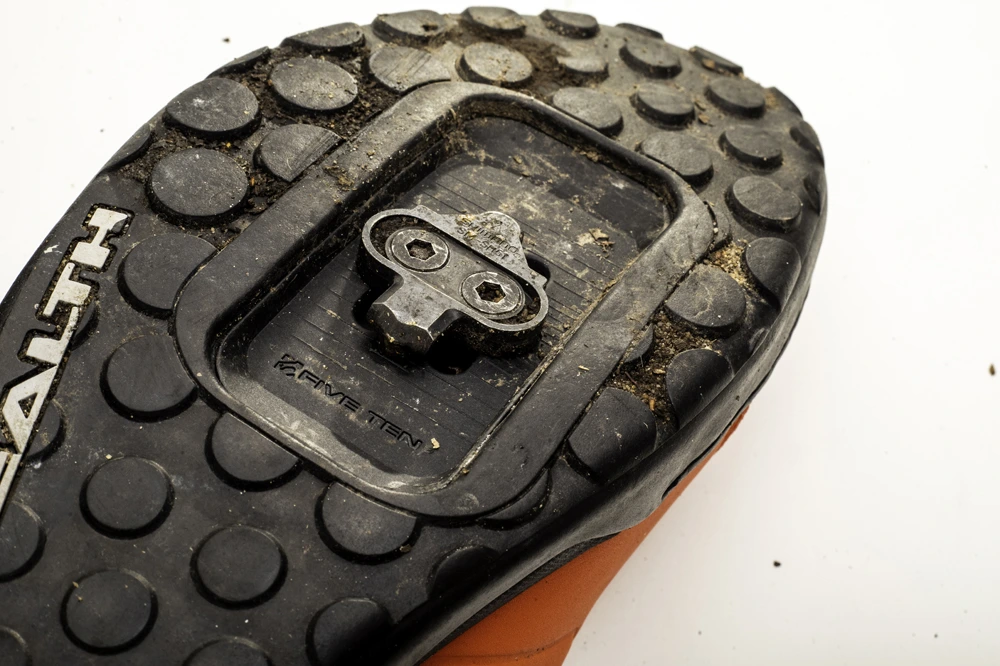
Mountain biking shoes come in two distinct forms – clipless and flats. Each has unique features that cater to the specific needs of riders.
Clipless Mountain Biking Shoes
Clipless shoes are designed with cleats attached to the sole that lock into a corresponding pedal. The idea is to provide the rider with more control over the bike, enabling them to maneuver it with precision and efficiency.
When the rider’s shoes are attached to the pedal, they can transfer power to the bike more efficiently, which enhances their overall biking control and riding performance. Clipless biking shoes are popular among experienced riders who are comfortable with the technicalities of the clipless system. Some good clipless shoes are made by Pearl Izumi and Bontrager.
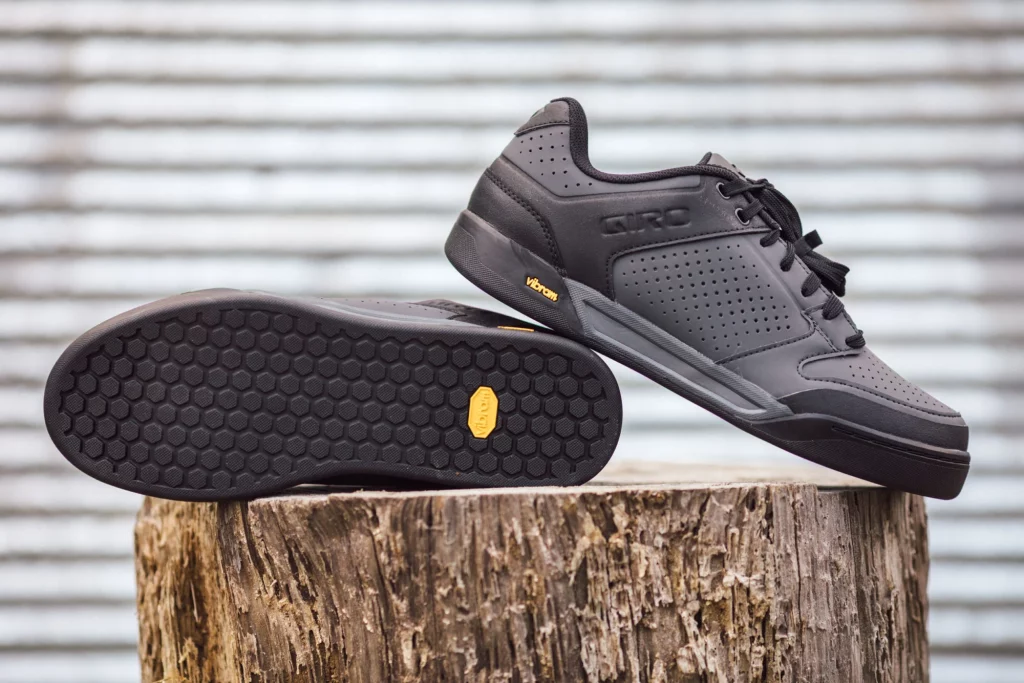
Flat Pedal Biking Shoes
Some riders prefer not to be attached to the bike during emergencies, which is why they choose flats.
Flats are shoes that look like regular sneakers, but instead of a smooth sole, they have a thick rubber sole with a lot of grip, which attaches to flat pedals. The rider gets the benefit of enhanced control through the grippy shoes but can jump off the bike during emergencies.
Flats are suitable for beginners who are still getting used to the basics of mountain biking. They are also ideal for riders who prefer a more relaxed ride without the technicalities of the clipless system. One drawback of flat pedal shows is that, since the shoes are “fixed”, some riders can find their feet move about the pedal, requiring them to adjust their footing during the ride. Some good brands for flat-pedal shoes are by Five 10 (owned by Adidas) and Ride Concept.
Mountain Biking Socks
Now to mountain biking socks. There are cycling-specific socks, which are a mix of natural and synthetic fibers. There are no rules on what socks to wear, but mountain biking socks have bright colors in general. Also think about the season and the weather.
Lighter socks keep your feet dry for summer riding. While wool socks insulate and offer moisture-wicking benefits in the winter.
Additional Mountain Biking Accessories
Beyond what you wear, there are a number of mountain biking accessories to enhance your riding experience.
Optional accessories include:
-
- Hydration pack
-
- GPS device
-
- Bike computer
A hydration pack consists of a backpack with a built-in water “bag”. The bag has a straw extending to your upper shoulder/ chest. This help you take sips while riding the bike, and will keep you hydrated without having to stop and reach for your water bottle.
A bike computer tracks the miles ridden, the amount of time you spent riding, and even monitors your heart rate and blood pressure. Many bike computers function as a GPS. GPS can help you track your progress and keep you on the right path while comparing previous rides.
These GPS units are a great addition for a new trail. They’re available at various price points and have limitless options and integrations for your phone.
Balance Style and Function for Limitless Adventure
Choosing your mountain biking clothing can be challenging, even for those with years of riding experience. Functionality, protection, and comfort should be your priority.
Choose clothes that are breathable, moisture-wicking, and lightweight: gear that fits properly and offers protection. Layer your clothes for added comfort and accessorize with items that reflect your personal riding requirements.
But don’t overlook style.
Look for mountain biking clothes that reflect your personal style and make you feel comfortable and confident. Choose colors and designs that will make you visible on the trail and stand out from the crowd.
Happy riding!
Check out my other biking posts for the latest adventures on the trails

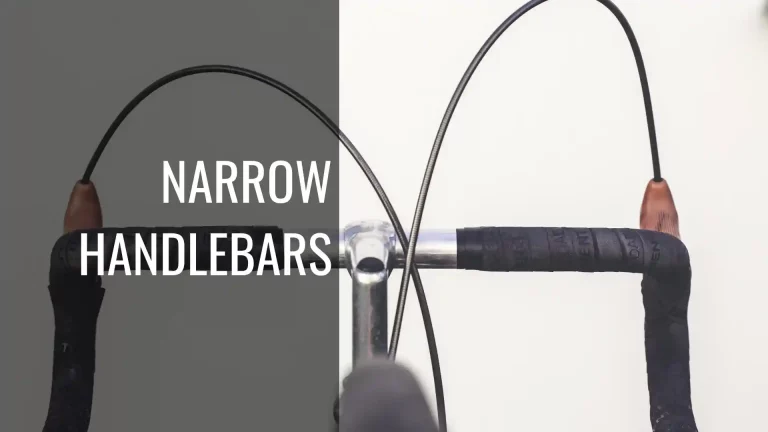
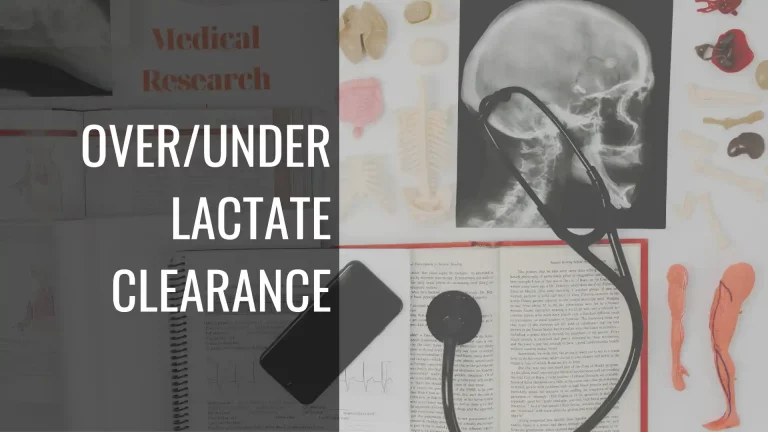
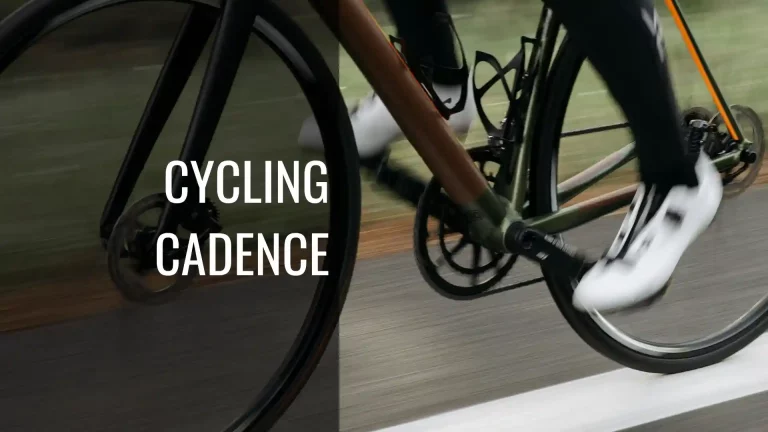
[…] accessories fall into two categories – bike accessories and rider accessories. Use this guide on what to wear mountain biking to give you an idea of what to plan […]
[…] had earlier written about mountain biking essentials and winter cycling essentials. So to add to these lists, I have been researching the following […]